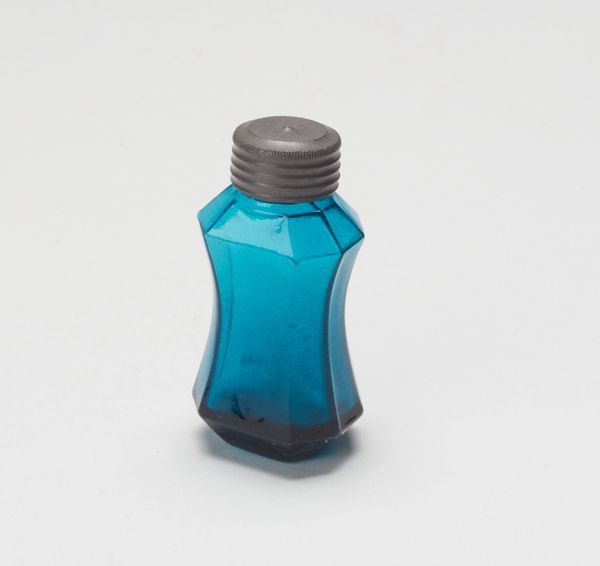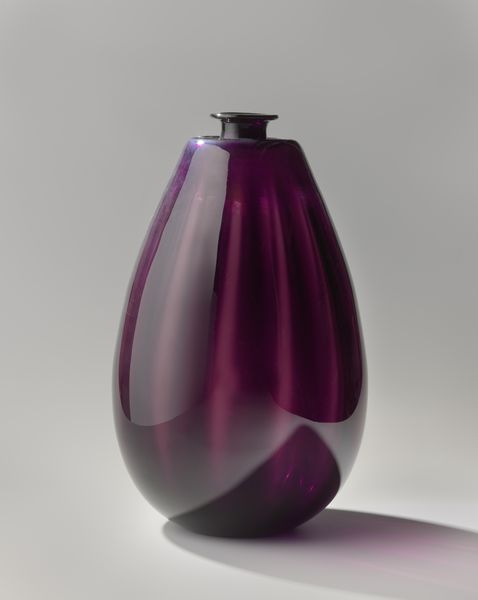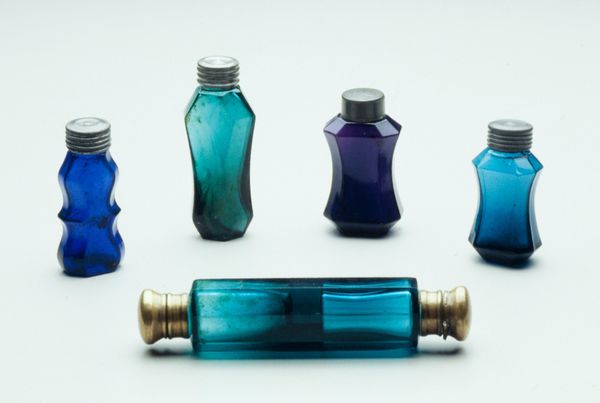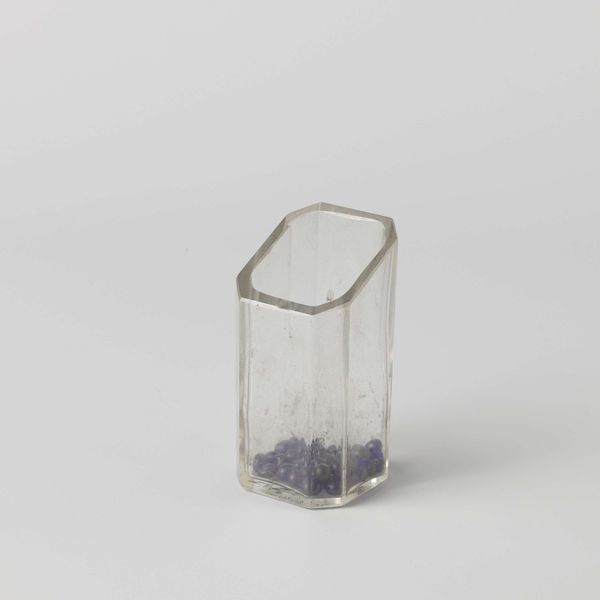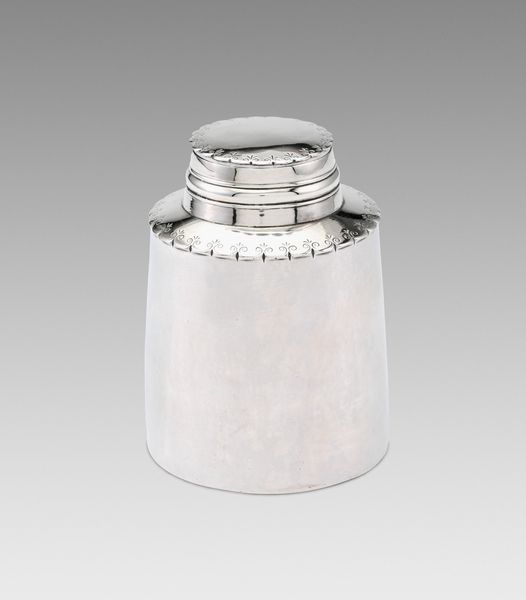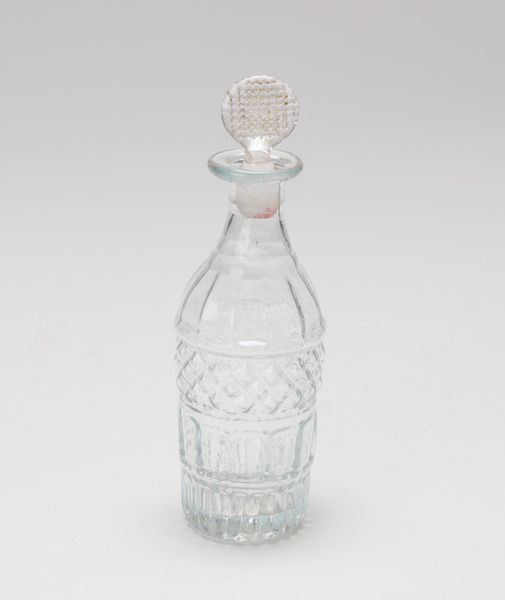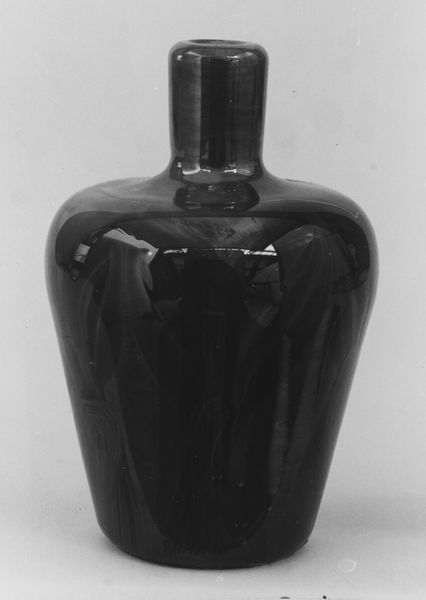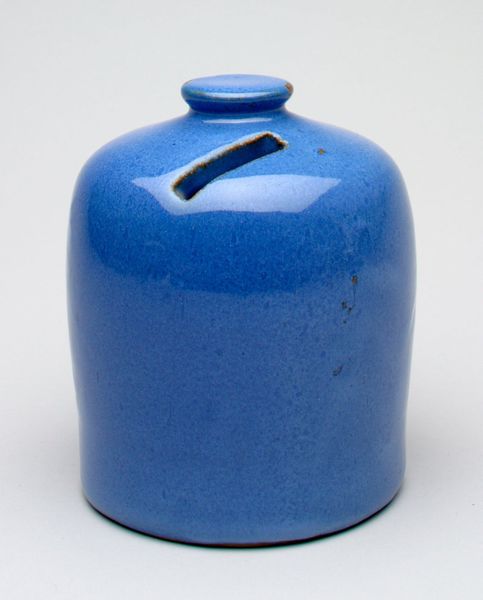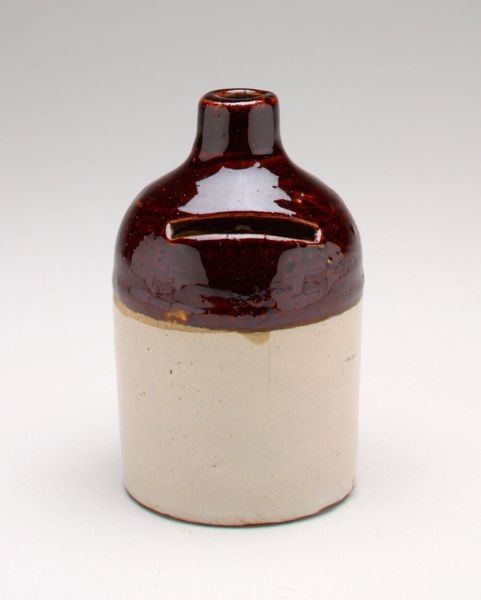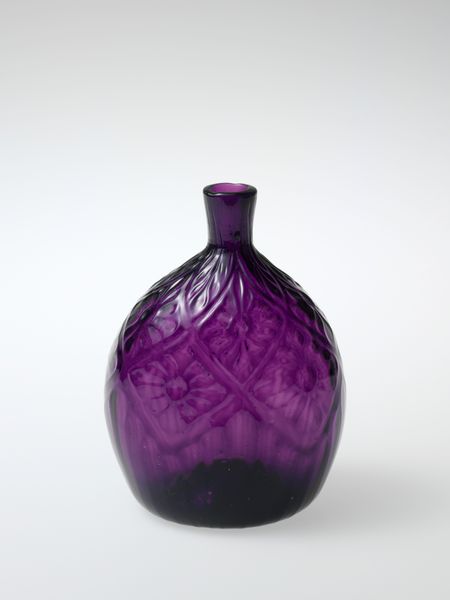
glass
#
glass
#
decorative-art
Dimensions: 2 1/2 x 1 3/8 x 1in. (6.4 x 3.5 x 2.5cm)
Copyright: Public Domain
Curator: Standing before us is a late 19th-century glass perfume bottle, part of the Minneapolis Institute of Art's collection. It's… smaller than I imagined. Editor: Its somber presence gives me a melancholy feeling, doesn’t it you think? It is like it holds a secret or memory. Curator: Perhaps that mood arises from the choice of color—a deep amethyst that absorbs most of the light. The faceted cuts and gentle curves could speak to emerging industrial techniques used in crafting luxury items in the nineteenth century. Editor: Absolutely! It also reminds us of the hands that must have shaped, molded, and polished the molten glass into this elegant shape. We are witnesses to skilled labor, where a craftsman’s or craftswoman's breath transformed hot magma into refined, consumer desire. Curator: Do you see the cap? The subtle concentric rings create a balanced harmony with the lower portion, uniting function and aesthetic sensibility. It suggests an underlying pursuit for the "perfect" artifact. Editor: And imagine the contents that would once be enclosed! A fragrance concocted from extracted oils, spices, the raw materials of empire. Consider how colonial enterprises impacted scent creation. A small bottle reflects an enormous global landscape! Curator: A striking insight. Even in a minor decorative object, we observe embedded narratives of empire, aspiration, and ingenuity. Editor: Precisely! A small token holds within itself narratives of production and societal transformation! Curator: Well, its compact nature reveals complexity upon close inspection. I find this small decorative glass work is a key into a particular materialist mindset. Editor: Its austere elegance does draw me into its social history—it's interesting how forms speak in multiple registers once material relationships are accounted for.
Comments
No comments
Be the first to comment and join the conversation on the ultimate creative platform.
